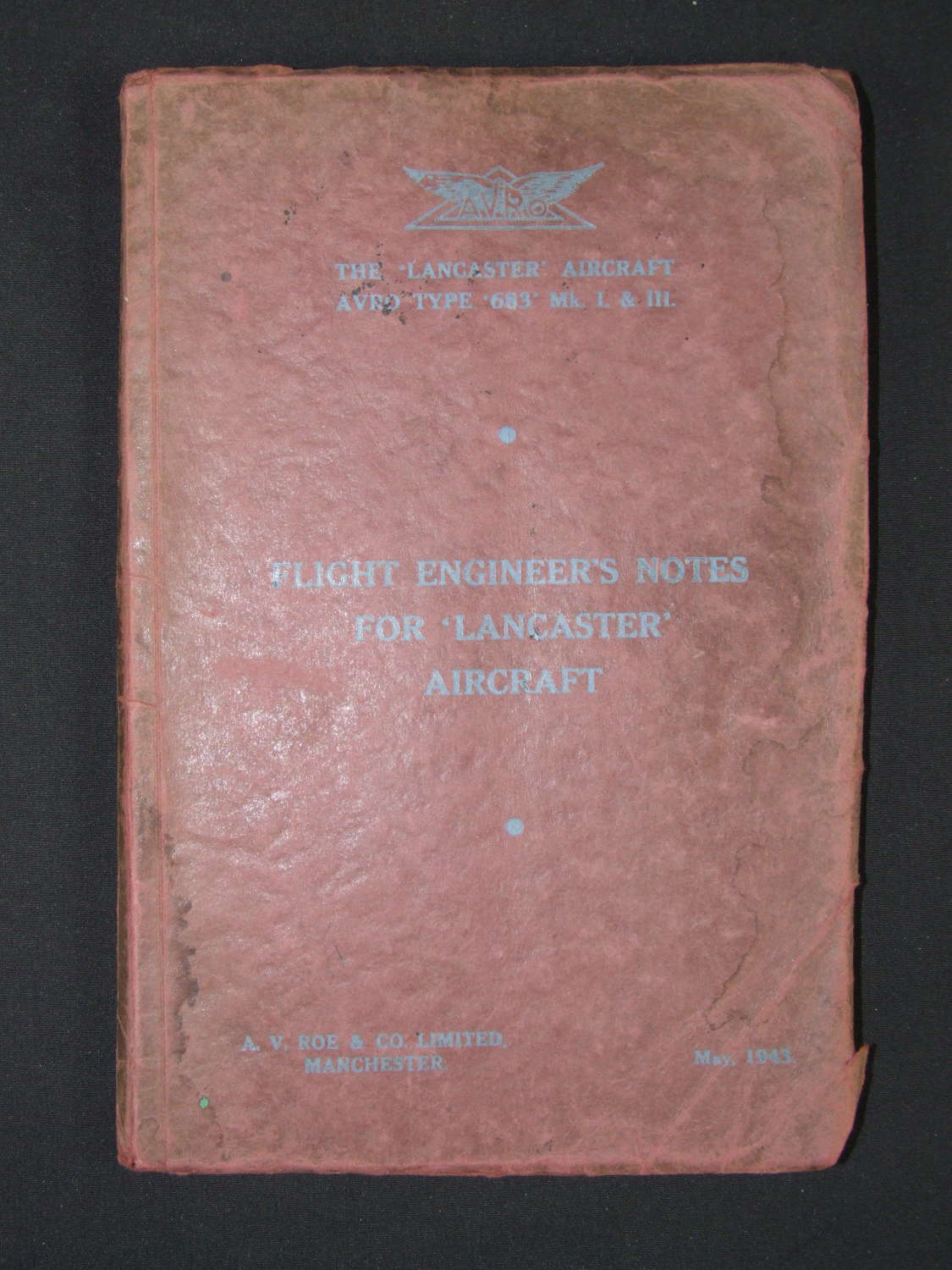


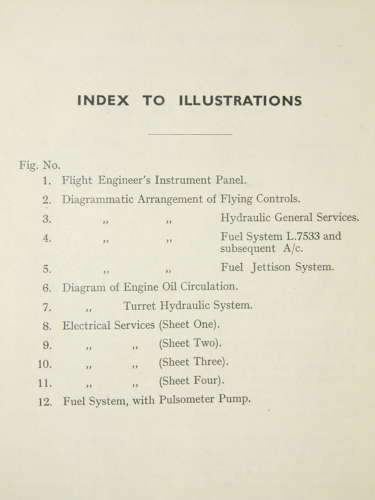




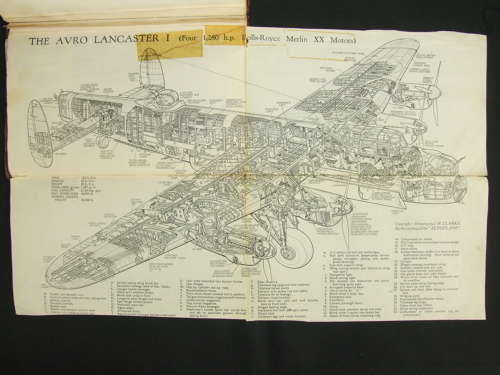
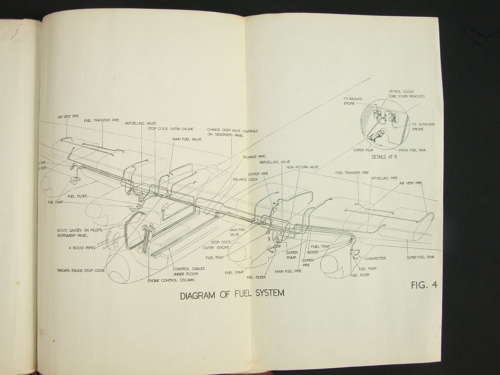

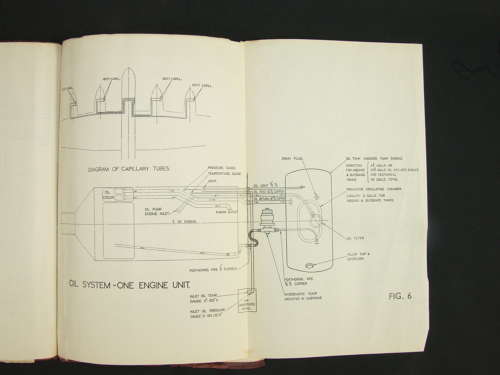
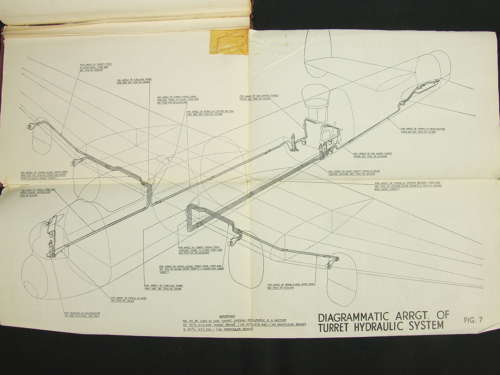






Code: 56595
An original copy of Flight Engineer’s notes for “Lancaster Aircraft”, AVRO Type '683' MK.I & III. Published by A.V.Roe & Co. Ltd., Manchester, May 1943.
Measuring approximately 14.5 x 22.5cm the notes are in booklet form with card covers details all drills applicable to the Engineer duties along with full details of the aircraft systems intext and with numerous pullout diagrams and charts.
Overall condition is very good used, but complete.
Interesting in its own right, what makes this copy number 836 much more interesting is its former owner whose details appear on the opening page, F/Sgt B Wright 1627924, Course 51.
Sergeant Barry Colin WRIGHT, Royal Air Force Volunteer Reserve, No. 166 Squadron was the Flight Engineer on Lancaster AS-Q, LM382 and was awarded the Conspicuous Gallantry Medal for his actions during a raid to Leipzig in February 1944. He was gazetted on 17th March 1944 along with other members of the crew:
This officer (P/O Catlin) and these airmen were pilot, flight engineer, rear gunner and wireless operator (air) respectively of an aircraft detailed to attack Leipzig one night in February, 1944. When nearing the target area the aircraft was intercepted by 2 fighters. One of them attacked from close range and the bomber was raked along the whole length of the fuselage by the enemy's bullets. Four of the crew were wounded, including Sergeants Hall and Wright, the latter being very severely injured. The aircraft sustained extensive damage, making it impossible for the pilot to take evasive action. Then, to add to the trials of the harassed crew, the bomber became fully illuminated in consequence of a short circuit occurring in the electrical system. The second fighter flew in to the attack but, although forced to operate his turret manually, Sergeant Birch met the attacker with a devastating burst of fire and the enemy aircraft burst into flames and dived to the ground out of control. Only 2 of his guns were now operating but Sergeant Birch used them most effectively and drove off the other attacker. Pilot Officer Catlin then set course for home. Meanwhile Sergeant Hall set to work to repair some of the damaged equipment and later succeeded in making the intercommunication system serviceable. Badly wounded as he was, Sergeant Wright retained consciousness and could not be dissuaded from attempting to fulfil his duties. He was deprived of the use of the instrument panel which had been shot away, while 1 of the petrol tanks was empty. Nevertheless, he continued to keep the engines running at their maximum power. In his efforts, Sergeant Wright had to be supported by a comrade and 3 times fainted through loss of blood but he never wavered. In the face of heavy odds, Pilot Officer Catlin reached an airfield where he effected a masterly landing. His skill, courage and determination were beyond praise. Sergeants Wright, Hall and Birch proved themselves to be valiant members of aircraft crew and did everything within their power to assist their pilot in his endeavours to bring the crippled bomber home.
The final images show a framed display of Sgt. Wright’s awards and is not included but is credited to a picture held by the International Bomber Command Archives at the University of Lincoln along with the picture of the telegram from ACM (Bomber) Harris. The picture of Sgt Wright with his crew can be found on the internet, Sgt. Wright being third from the right when viewing the picture.
A fascinating document having belonged to a brave man.